Album Production Intensive: Step-by-Step with Kevin March, Carl Glanville and the NowhereNauts
How does a producer get to grow along with an artist, when they work together on consecutive albums? As it turns out, the return experience can be enormously enlightening for parties on both sides of the glass. That’s certainly true of NYC’s The NowhereNauts, which have blasted off 2013 with their intense sophomore release on Club Rock Records, Warned You.
It’s equally valid for producer Kevin March, who made his name drumming for the likes of Guided By Voices, Shudder to Think, The Dambuilders, A Camp, The Rentals, and many more. March has been along for the ride with the NYC four piece – vocalist Sofie Kapur, bassist/vocalist Anders Kapur, guitarist Hunter Lombard, and drummer Tony Franco — since the start, helping to form the band of NYU students as part of an academic experiment gone terribly right.
After producing the band’s 2011 self-titled debut in bang-bang fashion from the drum throne, March was able to take time with his young charges for Warned You. Pre-production, tracking, and mixing took place over the course of several weeks at Stratosphere Studios (RIP) and Avatar, instead of just a few days. Just as importantly, two-time GRAMMY-winning engineer Carl Glanville
(U2, Billy Joel, Jason Mraz, Counting Crows) came on to co-produce, bringing a wealth of experience to the art of bringing the band’s best out.
As a result the band’s distinct rock sound — a soaring attack of gorgeous vocals and harmonies, driving guitars, and ballistic drums – come rushing out of the speakers on Warned You. It’s a major evolution from the relatively raw record that precedes it, and stands to win the young band a much wider audience if it can break through.
To understand the benefits that unfold when a producer and band maintain continuity — and learn a huge boatload of studio techniques that you’ll want to apply to your next production — do NOT miss this in-depth interview with March and Glanville. Read the whole thing, or if your time is short, jump to your top topics.
Take a look and listen to the title track:
PRODUCER AND ARTIST: ESTABLISHING A RELATIONSHIP
Kevin, how did you originally get introduced to the NowhereNauts, and why were they a band you wanted to work with?
KM: I first met Anders, Hunter and Sofie in 2006 at a music school in NYC that I was running, and later left. Then in 2008 I was given an amazing opportunity to bring them together to take part in a music educational experiment to see what would happen if musicians were given an authentic, professional, original band experience by writing, recording, rehearsing and performing together as a band in professional recording studios, professional rehearsal studios, venues, etc…
Well, it worked! So we kept going and The NowhereNauts were formed through that experience and turned into a full-on ROCK band. So, in short I brought them together and introduced them to their own talents by producing, co-writing, mentoring, educating and really pushing them to be the best professional musicians they could possibly be.
I really wanted to work with them because Sofie has an amazing, reedy, dynamic, expressive voice, and the band started writing these really great songs, plus they have a unique original sound, especially Hunter’s guitar sounds, which really stand out on this album. Tony was brought in after Album one (The NowhereNauts, 2011) was recorded and the band chemistry was complete! He has known Sofie and Anders most of his life, and he is a great drummer and prolific songwriter.
They embody everything I love about playing music and why I wanted to be a musician, especially when I was drumming for Guided By Voices, Shudder To Think and The Dambuilders. I really wanted to pass along my experiences and also share the mistakes I made, so they could hopefully avoid them and allow for an open road to success. And that is where The NowhereNauts are headed.
Kevin, what did you learn about the NowhereNauts in the course of making Album 1 – what did you see were there strengths as a band?
KM: I learned that when a band is prepared and rehearsed prior to entering a studio, as The NowhereNauts were, they can record and album really fast!
We recorded and mixed Album 1 (the self-titled debut) over two weekends; four days! That’s about four hours per song including mixing– crazy! The great, very patient and enthusiastic Ted Young was the engineer at The Magic Shop for these sessions — he made the sessions enjoyable and spirited. I played drums on the album out of necessity and for efficiency, so I essentially produced the basic tracks from the drum stool.
Their strengths were writing great songs, with great melodies and hooks, with my assistance co-writing the songs and bringing them into fruition as fully-realized pop songs.
One thing I want to point out is that they all play very well and naturally to click tracks; this skill was developed through many, many hours rehearsing live during the educational early days working with them to prepare going into the studio for the first time, which was at The Magic Shop with Ted Young engineering then too.
KEYS TO WORKING WITH CLICK TRACKS
Why is it so important that they work well with a click track?
KM: I believe everyone in a band, including the lead vocalist, need to understand the relationship to time — exact time that is — by rehearsing and recording with click tracks, so when you’re in the recording studio it is not a foreign sound or distraction-creating anxiety: It is your “friend” just hanging out telling you exactly where the pulse is, allowing for a great band track with a solid great “feel”-not stiff and uninspired.
Album 1 was recorded live with very few overdubs. A lot of the lead vocals were from the basic track recordings, because Sofie is that good, and those were the most inspired and “in the pocket”!
Also, what did you about the band that they could improve on for Warned You?
KM: Areas of improvement I would say: back up vocals from Hunter and Anders, a better understanding of how the instruments are played and attacked to give more character to their individual overall sound and to produce more mature sounding performances.
Learning to play TO the microphones is something that they all needed work on so we focused on that too, and that comes from a better understanding of how the different microphones all work. It is really important to record rehearsals and listen back with a critical, objective ear to what can be improved upon. We’ve been doing that since the beginning.
THE BENEFITS OF CONTINUITY: KEEPING THE PRODUCER AND ARTIST TOGETHER ALBUM-TO-ALBUM
Kevin, how was the decision arrived at that you would also produce Warned You? What was the creative opportunity you saw by returning as producer?
KM: Because I have worked with the band since its inception there was never any question that I would produce Album Two; I’m not finished with them just yet, so not so fast!
The creative opportunity I saw was to encourage them to write better songs, capture better performances, to produce better sounds. I really wanted to fully realize their potential, and I don’t think any other producer would have that ability, especially at this point in their development. I’m the only one who could do that. Warned You is really a culmination of five years of working very closely together, educating, producing, and knowing everyone’s personalities, and knowing how to efficiently and effectively push them to get great performances, and at the same time knowing when to pull back and let them shine.
I also wanted to produce an album that could compete with the mainstream music market to prove to all of us The NowhereNauts were capable, and that I could produce an album that I could step back from and say “It can’t get any better than that. There is nothing I want to change.” Warned You is THAT album to me. I’m not sure I can say that about a lot of the records I’ve made in the past.
ADDING A CO-PRODUCER
That’s a great place to be with your latest work. So how did you start to map out a plan that would ensure the band took things to the next level with this record?
KM: I’m very proud to have produced this album along with Carl Glanville, with a band who’s individuals’ potential I saw many years prior, and I have to say, reaching the goal of what Warned You is –eleven great, original songs that capture a moment in time and five years of hard, hard work — has to be one of my all-time greatest achievements.
I wanted to produce this album with Carl Glanville to take things to the next level. Carl and I have known each other for almost twenty years — he first recorded me drumming on Nathan Larson’s song “I Want Someone Badly” that the late Jeff Buckley sang. We also co-produced, along with Craig Wedren, Craig Wedren’s solo album Lapland. We have a great working relationship and mutual respect for each other’s talents, and he’s a phenomenal engineer!
I wanted to capture the best performances with the best possible sounds. We also brought in Nathan Larson, a great friend, amazing guitarists, and an expert guitar tone wizard to help Hunter and Anders get unique, proper recordable tones. We supplied Hunter with a ton of pedals, and had a pedal board built to allow us to really shape her tones and get those awesome sounds on Warned You.
We worked closely with Sofie on how best to get her completely comfortable in the studio environment so we could produce her vocals, not just record a performance. So we had to figure out how to make the studio environment a pleasant one: Do we dim lights? Light candles? Build a room so no one can see her?
None of the above, it was to record her in the control room, directly behind Carl and me, singing while listening to the band mixes coming through the speakers — the same mix Carl and I were hearing. It was so easy to communicate amongst the three of us allowing Sofie to confidently record the best possible performances. No one from the band was allowed in the control room or even at the studio for that matter.
Sometimes it can be very challenging to communicate through thick glass wall using mics and headphones, so we removed those somewhat distracting elements to record Sofie’s vocals.
Carl, what made you feel this was a project that would be a good fit for you?
CG: Kevin introduced me to the band four or more years ago, around the start of 2009 I think, when they were very young. We did a one-day recording session at Sear Sound – Kevin wanted them to experience a professional session with top-notch gear, facility, and engineer etc.., so I attended pre-recording rehearsal sessions at SIR, then we did the actual session one weekend day. I was very impressed with the potential the band had, and Kevin just kept me in the loop with their development over the years: I would go to shows and see them get better and better.
I mixed some singles for them after their first album, the recording of which was done very quickly and not by myself, and with I suppose you could say a less-sophisticated approach to the production.
After that we started talking about the possibility of a second album that would have both myself and Kevin producing, and take on a much higher-end approach to the production and recording, with a proper amount of time being made available to allow us to achieve that goal. We did a quick demo recording at a non-air conditioned, extremely humid, middle of the New York summer, ridiculously hot, rehearsal space out in Brooklyn, just to see what the dynamic of the band was like and how well they worked to a click etc… which also gave me a chance to record the band’s new drummer, Tony.
That turned out well, so I think we moved forward with the idea to do the album at that point. The “good fit” kind of just naturally emerged out of previous experiences, and my being so encouraged to see how fast and how much the band was maturing, both in their playing abilities and their song writing.
MAKING BETTER DEMOS IN PRE PRODUCTION
Why was it particularly important for you to take the additional time for “proper demos” on Warned You?
CG: As I mentioned earlier, we had very quickly recorded two songs as demos out in Brooklyn in the summer prior to the Album’s recording, and then Kevin made a point of recording all of the SIR rehearsal sessions, with just a single mic in the room. He also recorded live shows, but again just with a room mic or board mix, no multitracks. Kevin’s recordings essentially made up the first set of demos, and they become our reference point.
Because of everyone’s schedules we had originally planned on recording two songs (including the overdubs) per weekend for six weekends, with rehearsal sessions in the evenings prior to the recordings where pre-production work would take place. So the idea was that we would basically “demo” and make ready two songs during the week, then record them at the weekend. But our initial schedule for recording suddenly changed after our first “proper album session” and we had to totally rethink our plan for the recording.
What happened?
During this time I found myself wanting to have more sophisticated demos to work with so that I could, if I wanted to, take multitracks into my studio prior to the actual recording and work on the songs, maybe trying out edits or re-arranging parts etc…
I needed a multitrack so I could mute vocals and/or extend musical sections. Having multitrack demos meant that we could also immediately record basic overdub ideas, so Hunter could do an entire track of rhythm guitar, then add a solo or counter part that would allow me and the rest of us to get a much clearer sense of where the song was headed, and at least get fundamental parts down in demo form.
Backing vocals and harmonies were also added to help flesh out the song more, so we could get a sense of its production potential. I haven’t really worked on an album before where there weren’t demos that had at least a couple of overdubs on them, so one can see where things are headed musically, so I felt it was a necessity.
Because the band was so well-rehearsed at this point, we recorded demos for 13 or 14 songs in two days over a weekend, overdubs included. Among other things, we were able to sort out tempos and which songs worked best with a click track and which worked without. The demos turned out really great, and really helped give a clear picture of where we were headed.
KM: Because we were going to be recording in expensive recording studios I did not want to waste time while in the studio — we wanted everyone in the band to know exactly what they were going to play so they/we could properly prepare prior to going into the studio.
We recorded the whole album in demo form over three days at SIR studios where the band rehearses, overdubbing guitar parts, vocals, percussion, everything. It was really a quick runthrough of exactly what we were going to record. After the demos were recorded we knew we were ready to go record the album.
We did have a false start with the first studio we entered due to some technical problems, and we weren’t satisfied with the drum sounds. So Carl and I had an emergency discussion with my partner, Paul Kerwin, at Club Rock Records and it was decided that we would go to world-renowned Avatar Studios to record the basics in the legendary Studio A. Over a very cold, two-day weekend session last February, we recorded the basic tracks to thirteen songs with Sofie singing on every take!
You referred to that as a “Magical Weekend”…
Everything sounded great and the band was on fire, and that’s why Warned Youis such a great, dynamic album! I know it was because of recording the demos that we were able to capture The NowhereNauts performing fully focused on these songs.
I also conducted the band while in the live room with them and with Carl in the control room, and it worked great! Being in the live room is how I prefer to produce so I can feel the band vibe of the takes, and that’s also the perspective I’m used to from being a recording session drummer.
Can you point to a song on the album that really grew and improved as a result of the thorough demo process this time around?
KM: I would say “Warned You” and “Wave Me Out” are the two songs that really improved after the demo process. I was really looking forward to using the studio to magnify the space and sonic density I heard in the demos in both of those songs. Carl did an amazing job putting all of those sonic pieces together once in the studio. Because we properly demoed them beforehand I was able to really hear how to approach them in the studio.
Carl then totally took “Warned You” to a whole other level during the mixing process. I actually got quite emotional the first time I heard the final mix of the song — I couldn’t turn around to look at Carl until I composed myself…it was that good and after all this time preparing it was kind of overwhelming to listen to and digest.
DRUM PRE PRODUCTION, MIKING, AND MIXING
The drums sound outstanding on Warned You. What gave you increased confidence this time around to use band member Tony Franco in the studio? Kevin, how did you use your experience to coach him and get maximum results?
CG: Tony is a relatively new addition to the band and I had not worked with him before, so there was no “this time around” as far as I was concerned.
Both Kevin and I discussed very early on the fact that we would have to have Kevin play drums for the album if Tony couldn’t cut it. But I am very happy to report that Tony blew us all away with his great playing – he is totally rock solid and plays to a click like a total pro. When we did the hot summer demos, that was the first time I recorded Tony to a click and I was concerned as to how it was going to turn out, but within 16 bars of him playing I turned to Kevin and smiled because I knew we weren’t going to have any problems in that department. In fact, the drum takes on this album have little or no edits in them at all.
With the band so well-rehearsed and so familiar with what they were playing, we were able to go into the studio and record all the basic tracks for the entire album, plus a couple of extra songs, in just two days. The basic tracks of drums, bass and guitars for many of the songs are exactly what was played live in the studio. It was really pretty thrilling to record basic tracks for a whole album that quickly, the performances were so solid and one really feels it in the finished versions of the songs – the band’s chemistry is cemented in the basic tracks, then the overdubs hang off of that foundation.
KM: Well, Tony is The NowhereNauts drummer so I really wanted him to be the drummer on the album. I knew it was going to be a lot of work to get him up to the performance level necessary for what we wanted from this album.
So I started working with Tony in my rehearsal space in Williamsburg teaching him technique — Joe Morello’s natural technique to be exact — playing to click tracks and solidifying his parts, and most of all pushing him to deliver the best-sounding, dynamic, performance he was capable of recording. I discussed with Tony that “I will be ready and prepared to play the drums on this album, but our goal is for you to play drums on the album, and in order to do that you are going to have to perform in the studio at a much higher level than you are right now during the rehearsals.”
In other words I wanted to push him to be the best drummer to record these songs, if I had to threaten to take away recording drums on the album to get a better drummer, well, that’s what had to be done.
In the end he worked really, really hard and recorded some of the most solid, inspired drum tracks I’ve heard in a long time. He delivered! He is an incredible drummer and one to keep an eye and ear on in the future.
The drums also sound amazing on this album because we used a Craviotto drum set made out of walnut. It is one of the most amazing drum kits I ever recorded!!
Geek out! Give us some pointers on how the drums were miked/and or mixed.
CG: The basic tracks were recorded in Avatar Studio A — without a doubt, one of the best-sounding rooms for drums in the world. So right off the bat we had a great acoustic space to work with.
We found the sweet spot in the room and then set up the kit and miked it in a relatively traditional way: D112/47 on the Kick, 57/441 on the snare, 421 on the toms. I used KM86 mics for the overheads – those were new to me – Avatar has tons of them and they sounded great. Then, because of the room being what it is, I really wanted some extra coverage, so I set up three pairs of room mics at various distances and heights, plus the stereo pair that Avatar has mounted in the ceiling.
It’s a little overkill, but I really wanted the option to increase the size and depth of the room in the mix later, should the song benefit from it. Plus, recording to Pro Tools meant we didn’t have to worry about track counts. During the mix I played with various combinations of all the mics, ultimately using whichever best suited the song.
VOCAL PRODUCTION PROBLEM-SOLVING, TRACKING, AND MIXING
On that tip, please tell us how you approached arranging and recording the vocals – they really soar on Warned You.
CG: Recording the final vocals was interesting. We had a guide vocal for each song and used that during overdubs, then when each song was ready for the final vocal Sofie would come in, usually in the early evening, we would choose two or three songs to work on and record a complete vocal take three to six times, and maybe do a few punch ins for certain phrases.
We wanted to keep the flow going, so didn’t really interrupt her too much and I knew it would be much easier for me to just make sure I had all that I needed performance-wise, then comp between the takes later.
Interestingly, we found that Sofie was far more comfortable singing in the control room rather than out in the studio. Before recording, we would listen back to the song with just Sofie, Kevin and myself in the room and Sofie would sing along as we were listening, and she sounded great — very natural and comfortable — but then when she went into the studio and put the headphones on, something changed. She didn’t seem as comfortable, the performance wasn’t quite as engaging, almost like she was overthinking it perhaps.
Behind-the-scenes video of the recording of “Insomnia” at Avatar:
So as a test we had her come back into the control room, asked how she felt about singing in here without headphones, just like the run-through. She was totally up for the idea, so we set up the mic and recorded using the U 47 and the control room speakers for monitors — no headphones.
I rode the control room speaker level for when the song got really loud or quiet to minimize leakage in to the 47. This method worked out great for us and all the lead vocals were recorded that way. The background vocals were done in the usual way. We double tracked the lead vocal for almost every song as Sofie tracks herself so well, but then during the mix I would work out exactly where it should be used, if at all. Because Hunter and Anders supply a lot of background harmonies and parts (which we would also double track) it was sometimes unnecessary to have the double tracked lead vocal in there as well.
I spent a fair amount of time working on a sound for the lead vocal, not because there was anything wrong with what had been recorded, I just wanted to give it something extra; a special character. I recorded it with a great vintage U 47 and through the Neve 8078 desk at Stratosphere Studios with a Blue Stripe Urei 1176. Then for the mix I used the UAD 1176AE plugin from the Universal Audio Classic Limiter plugin collection to give me the special character I was looking for.
KM: We took a lot more time recording the vocals on Warned You than we did on the first album. Sofie had about 30 minutes per song on album 1 to record a vocal and she had several hours per song on Warned You. Plus, Sofie was much more comfortable and experienced on Warned You than on the first record.
MIXING
Carl, you mixed the album at your midtown facility, Radio City Music Studios: What was your mixing approach?
CG: The source material was very different from anything I have had from NowhereNauts before, in that I was the one recording the band this time, so I was able to get the sound I wanted coming out of the speakers at the moment it was being recorded.
I EQ’d and compressed things as they went down, so the sound of the vintage gear was locked into the recording of each track.
I have always recorded using EQ and processing, so that when it comes to mixing the sounds are already 90% of the way there (hopefully!). Why miss the opportunity of recording through all the great analogue gear that was at our disposal?!
When it came to mixing I already had great-sounding tracks to start with, and then it was just a case of sonically shaping things and being creative rather than having to “fix” bad-sounding things. Mixing is a lot easier if the mix is being built as the overdubs are being recorded — that’s something else I tend to do — I want the song to sound as finished as possible as we are recording it.
Then as each overdub gets added, it finds its place in the mix automatically, and if the overdub doesn’t seem to be working then it probably shouldn’t be there, or else something else has be taken away. Making decisions along the way while recording makes mixing a whole lot easier.
That was something Kevin and I were able to do: Prior to the final mix I would work on a few songs by myself, maybe add a keyboard part, or mute some guitars to create a dynamic build etc…, and then ask Kevin in to get his thoughts on the options I presented him, then we’d decide what was working and what was not, and move on.
That’s a sharp workflow. What’s the setup you use at Radio City to mix with?
For the final mix I mixed in Pro Tools using my C24 controller, monitoring through my Adam S3X-H and mainly used my Universal Audio UAD 2 plugins. I have loved their plugins since the UAD 1, and with the UAD 2 things really stepped up several notches — I find myself being able to emulate the signal path and effects I grew up with back in the all-analog days: EMT Plate reverbs, 224 reverbs, tape delays, mixing to an ATR tape machine, SSL mix bus compression, Neve compressors, DBX 160 etc…, plus being able to access the 8068 EQ that I recorded the album through, in plugin format, so I can keep the continuity where needed.
I actually did a little test where I recorded the drum overheads through the Avatar 33609 and then also recorded them simultaneously without compression on different tracks. Once back at my studio I used the UAD 33609 on the unprocessed tracks and A/B’d between the original and the plugin — I was stunned how close they were. So the UAD plugins have become my first choice when mixing, and I think really helped keep the organic sound of this NowhereNauts album.
MASTERING WITH GREG CALBI
Moving on to the final phase: What guided your choice to have Greg Calbi master Warned You at Sterling Sound?
CG: I have worked with Greg since the 1990’s and I love his approach to modern mastering issues, such as how loud mastered material should be.
I absolutely hate how loud most things are. It’s so fatiguing to listen to and just makes me want to turn things off — I just don’t get any enjoyment out of the overloud mastering that has progressively poisoned audio over the last 15 years or so. Greg has a very musical way of getting a very contemporary sound without compromising the integrity of the mix or reducing dynamic range to the point of fatigue. So he was my first choice, and we were lucky to get him.
KM: We used Greg Calbi because he is one of the best mastering engineers in the world, especially for this type of dynamic rock music. We wanted his touch on this album and he delivered, we couldn’t be happier with the results.
I also worked with Greg when he mastered a band called Death of Fashion I produced with John Agnello, and he did a superb job!
This has been an incredible amount of useful information about the recording process. Pulling back, why do you feel it’s beneficial for artists and producers to do multiple album projects together — how do these pairings know when its right to do a return trip together, and how do they know when it’s time to move on?
CG: In some respects making an album is a bit of a strange experience: You have a band, a producer and an engineer, and all these people need to almost become an instant family and get along very well, very quickly. You are all working together for maybe 50 days or so and are expected to produce something at that end of that time that represents everything the band is trying to say as an artist, to make it accessible and appreciated by as many people as possible and have it be a success.
If after the first album together you succeed at that, and the process was enjoyable for all, it seems logical that if the opportunity to work together again arises, then it would make sense to give it another go and see what happens. The second time around everyone already knows each other, so things can often move a lot more swiftly and creatively as one can bypass the “treading carefully” part of working with someone new, and just get down to the business of making a great album.
Some artists like to change things up with each and every album, working on purpose with different producers and engineers so things don’t get stale. Some artists respond well to that challenge, but others love the comfort of knowing that their producer and engineer knows what they do and don’t like and that their aesthetic does not need explaining — the artist can sometimes feel more free to experiment with new ideas comfortable with the knowledge that their tried-and-tested team has got their back in the way they want, without having to say anything. Again, you can just get on with it and have a good time.
It’s time to move on when the fun has stopped entirely!
KM: I think it’s beneficial for artists and producers to work on multiple albums because only over time do the artists and producers really learn and understand how to communicate to create and produce great music. Those relationships take time, sometimes years to develop, and when they work great it only makes sense to continue working together.
I think of Brian Eno and Daniel Lanios working with U2. They developed a sound together that has worked over many albums, and that is what I have created with The NowherNauts over multiple recordings and the writing of many songs together.
I think it’s time to move on when great music is not being created and no one is pushing to make it better. Or when the pairing becomes complacent, or when the band and support to make great music comes to an end.
Those are some great insights. Lastly, let’s put the spotlight on what the producer/engineer gets out of it — how did your personal growth as producers intersect with the band’s growth as artists on this project?
CG: I think that Kevin had spent such a long time – years — developing the band and did their first album by himself, but realized that to take it to the next level for the second album, he was going to need the help of someone like me who with my experience could help facilitate the vision he had.
I don’t have the same experience that Kevin has when it comes to songwriting and band development, so for me to sit in on pre production rehearsals and learn things from him was as rewarding as him watching what I do in the studio — it was a very complementary growth for us both, I think.
That it added to the band’s growth as artists was great — they were starting to write more and more sophisticated songs, becoming better and better musicians and even during the recording of the album I could see them becoming interested in new things, exposed to new instruments and techniques which I’m sure will make themselves evident in future songs and recordings. The timing of us all coming together could not have been better.
KM: My personal growth as a producer developed alongside the band’s growth as songwriters and performers, beginning when we initially brought them together five years ago. Our knowledge and abilities grew together over the many recording sessions, rehearsals, shows, and songwriting we have done together over the last five years.
— David Weiss
Producer contacts:
Kevin March, kevin@thenowherenauts.com
Carl Glanville, cglanville@mac.com
Please note: When you buy products through links on this page, we may earn an affiliate commission.







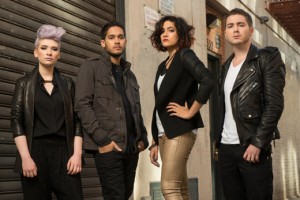
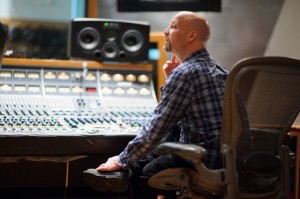
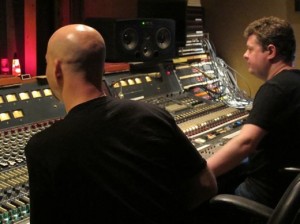
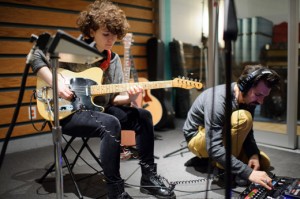
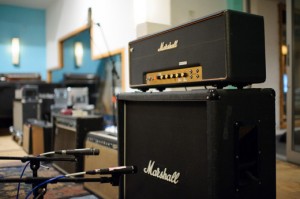
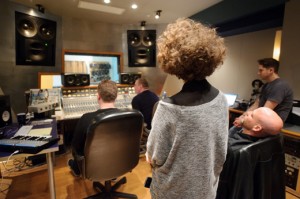
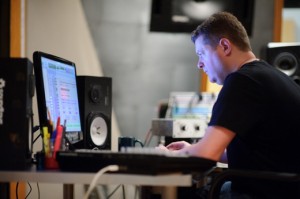
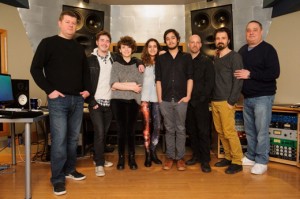
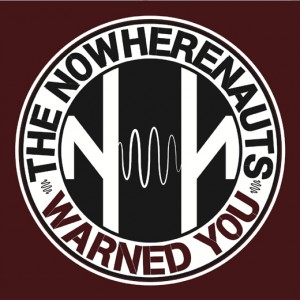
Paul Z.
January 30, 2013 at 9:19 am (11 years ago)This is very interesting to me, because not having recorded at either Avatar or Stratosphere (RIP), I have a new appreciation for their “optionality”/flexibility. Sometimes I get frustrated in our studio (not to be named here) with my limited recording options. Anyway! This was fascinating to read the development of the band, and the final tech specs for recording them. Sounds like a great assembled team, and then they pulled in Greg Calbi to top it off!! Crazy amazing.